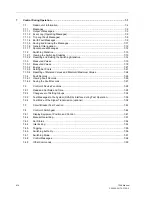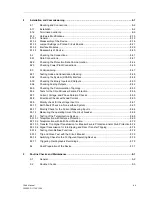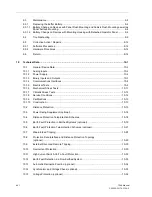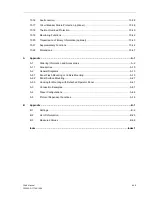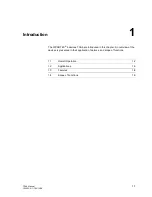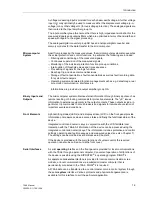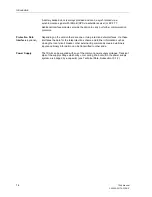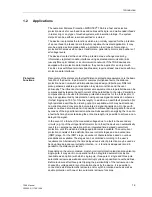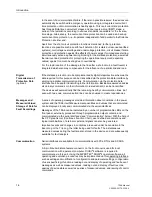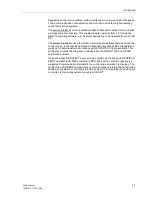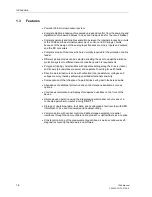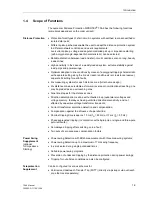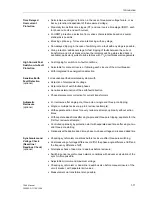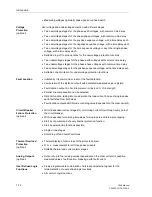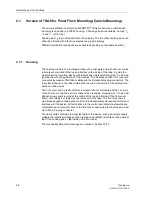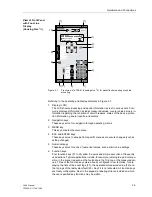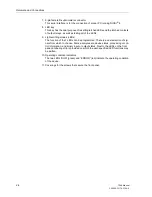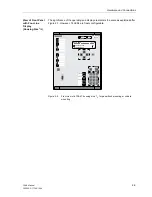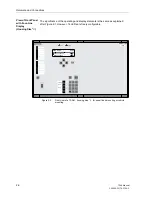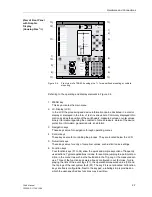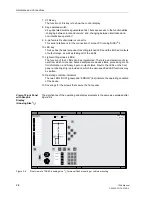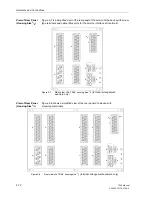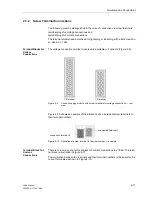
Introduction
1-10
7SA6 Manual
C53000-G1176-C156-2
•
Differential connections (release or blocking schemes, with separate overreach
zone or directional pickup)
•
Pilot protection / reverse interlocking (with direct voltage for local connections or
extremely short lines)
•
All lines are suited for 2 or 3 ends;
•
Phase segregated transmission applicable for lines with 2 ends;
−
Communication between devices via dedicated communication connections (in
general optical fibre) or a communication system possible (as an option);
−
Steady monitoring of the communication ways and the signal propagation delay
with automatic re-adjustment.
Earth Fault
Protection
(optional)
•
Earth fault overcurrent protection, with a maximum of three definite time stages
(DT) and one inverse time stage (IDMT) for high resistance earth faults in earthed
systems;
•
For the IDMT protection a selection of various characteristics based on several
standards is possible;
•
A fourth definite time stage can be set for the IDMT
•
High sensitivity from 3 mA (dependent on the version) is possible;
•
Phase current stabilization against error currents during current transformer
saturation;
•
Inrush stabilization with second harmonic;
•
Earth fault protection with a tripping time dependent on zero sequence voltage
•
Each stage can be set to be non-directional or directional in the forward or reverse
direction;
•
Direction determination with zero sequence system quantities (I
0
, U
0
), with zero
sequence current and transformer star-point current (I
0
, I
Y
). or with negative
sequence system quantities (I
2
, U
2
);
•
One or more stages may function in conjunction with a signal transmission
supplement, also suited for lines with three ends
•
Non-delayed tripping after switching on to a fault is possible with any stage.
Transmission of
Information (only
with Digital
Protection Data
Transmission)
•
Transmission of the measured values from all ends of the protected object;
•
Transmission of 4 commands at all remote ends;
•
Transmission of 24 additional binary signals to all remote ends.
Tripping/Echo at
Line Ends with
No or Weak Infeed
•
Possible in conjunction with teleprotection schemes;
•
Allows fast tripping at both line ends, even if there is no or only weak infeed
available at one line end;
•
Phase segregated tripping is possible.
External Direct and
Remote Tripping
•
Tripping at the local line end from an external device via a binary input;
•
Tripping of the remote line end by internal protection functions or an external device
via a binary input (with teleprotection).
Summary of Contents for siprotec 7SA6
Page 2: ...Siemens Aktiengesellschaft Book No C53000 G1176 C156 2 ...
Page 18: ...xviii 7SA6 Manual C53000 G1176 C156 2 ...
Page 32: ...Introduction 1 14 7SA6 Manual C53000 G1176 C156 2 ...
Page 82: ...Hardware and Connections 2 50 7SA6 Manual C53000 G1176 C156 2 ...
Page 119: ...SIPROTEC 4 Devices 4 25 7SA6 Manual C53000 G1176 C156 2 Figure 4 20 CFC Logic example ...
Page 190: ...Configuration 5 62 7SA6 Manual C53000 G1176 C156 2 ...
Page 652: ...Installation and Commissioning 8 78 7SA6 Manual C53000 G1176 C156 2 ...
Page 724: ...Technical Data 10 56 7SA6 Manual C53000 G1176 C156 ...
Page 800: ...Appendix A 76 7SA6 Manual C53000 G1176 C156 2 ...
Page 866: ...Appendix B 66 7SA6 Manual C53000 G1176 C156 2 ...

